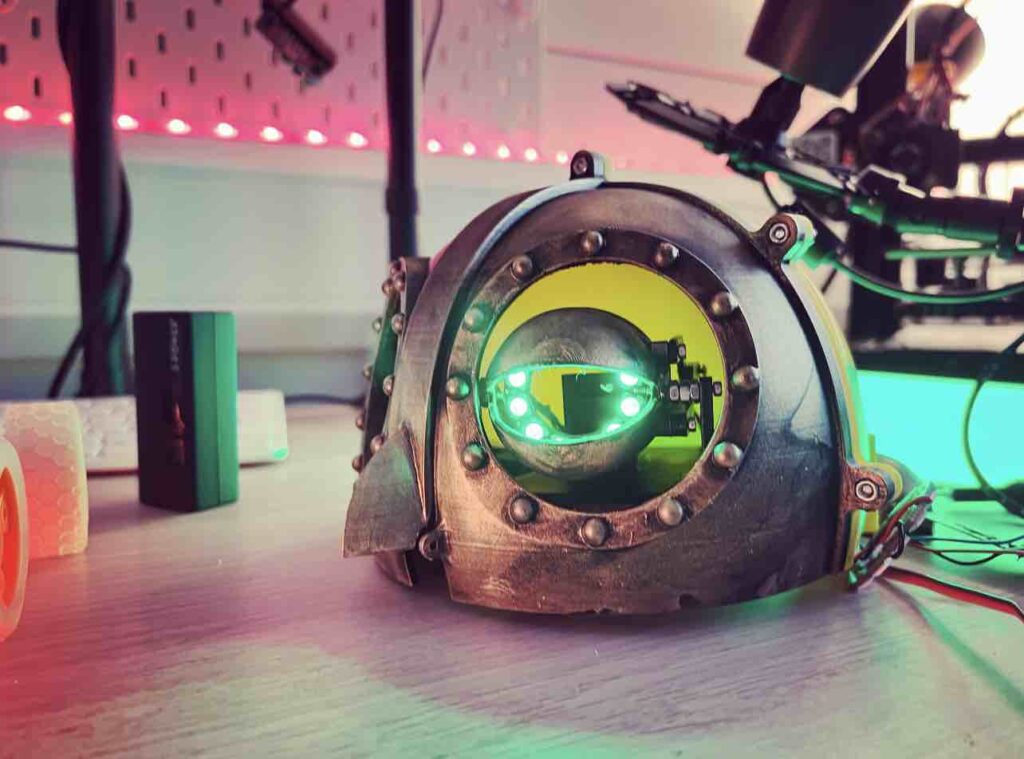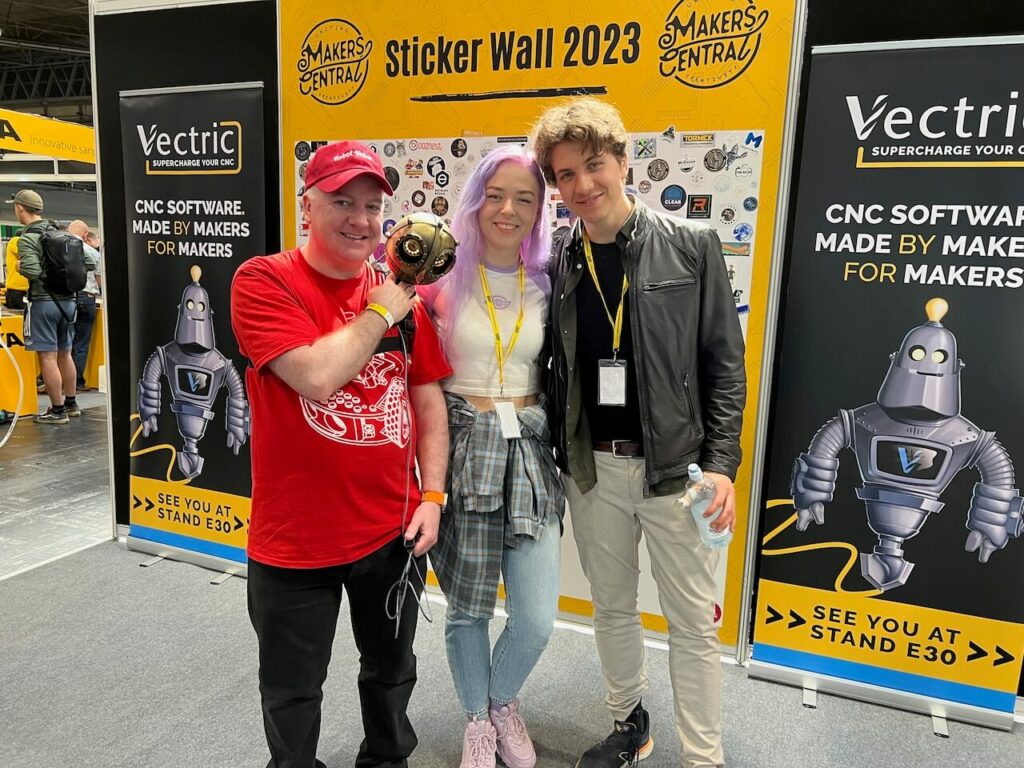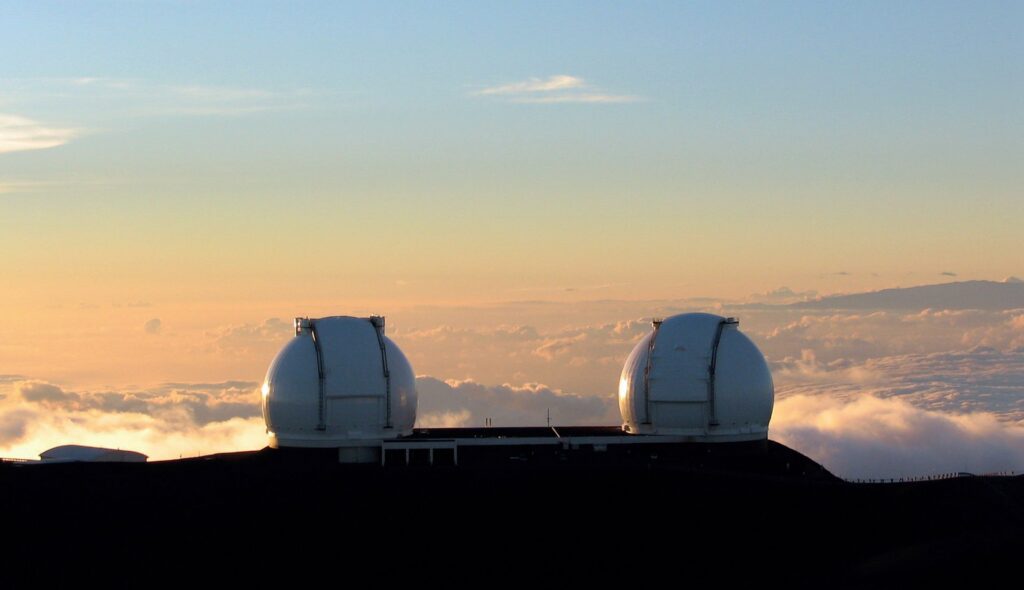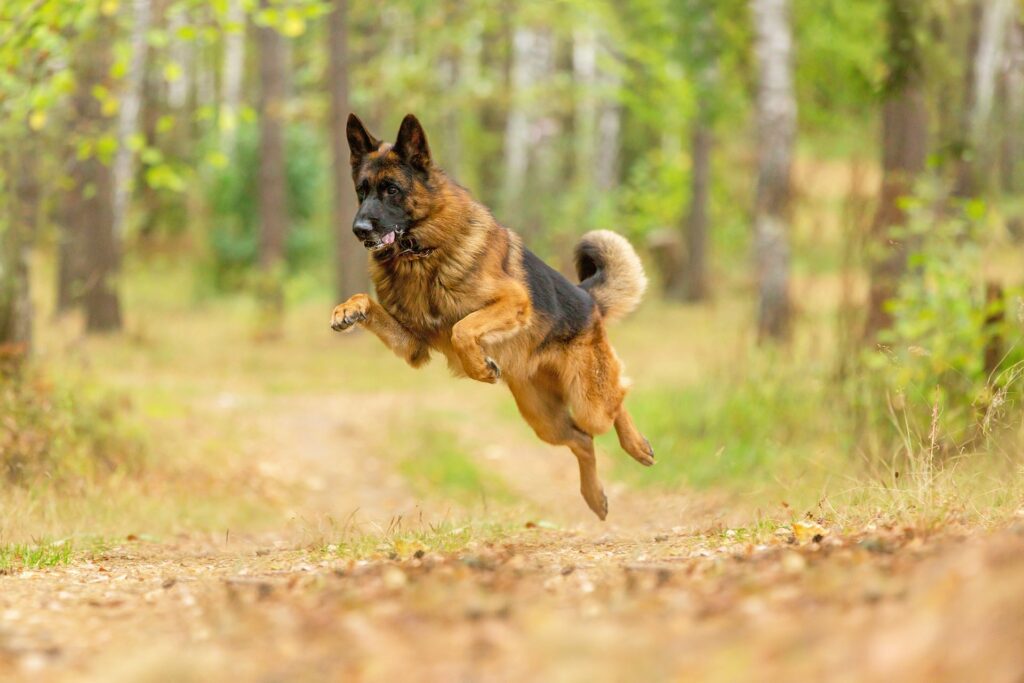Bubo-2T the Steampunk owl with AI – Kevin McAleer (United Kingdom)
Bubo is a steampunk-style companion robot that recognizes hand signals using AI technology. When it sees two fingers held up in a V sign (held for three seconds or longer), Bubo snaps a photo and shares it on social media accounts.
The image Bubo takes is also displayed on a wrist-mounted console with a screen and keyboard known as a “Pi-Pipboy” (also invented by Kevin).
Bubo is powered by a Raspberry Pi computer, which Kevin accesses using RealVNC Connect for development and maintenance. Real VNC Connect also used links the Pi-Pipboy device to Bubo when Bubo is in use.
Cache of the Titans
Since he was a kid, Kevin has always been fascinated by the robots he saw in classic films, especially Forbidden Planet, Westworld, and Short Circuit. Realizing that humanoid robot companions were unlikely to be available for purchase anytime soon, he began trying to build his own. This sparked a lifelong passion for robotics!
During a break between software development projects, Kevin began making videos about his latest robot creations. He now has a growing YouTube channel where he regularly showcases his inventions, which include a pancake-flipping robot called Pancake-bot, a drawing robot called Burger-bot, and a Christmas tree decoration that changes color in response to social media posts.
Kevin began publishing a series of videos about the creation of Bubo nine months ago. Its design and functionality are inspired (of course) by a classic film. The original 1981 version of Clash of the Titans featured a clockwork owl named Bubo, created by the god Hephestus, which relayed images back to the gods on Mount Olympus.
Just like the Bubo from the movies, Kevin’s version has a similar steampunk design to the one in the film, and shares images remotely.

Kevin has taken Bubo to multiple events, where the robot owl attracts the interest of everyone that sees it. Attached to Kevin’s shoulder, Bubo snaps a picture of anyone who holds up two fingers in a V sign for more than three seconds. Moments later, it shares the image on its social media accounts.
Bubo-2T – owl: the facts
By creating Bubo, Kevin has demonstrated his chops in everything from software and hardware design to AI and machine learning to 3D printing.
Central to Bubo’s operation is a Raspberry Pi computer, which also includes the camera Bubo uses to observe its environment and take pictures. Using the open-source program OpenCV, Bubo employs machine learning to detect hands and then counts the fingers it can see. When it identified the correct two-finger hand signal, Bubo knows it’s time to take a photo.
One unexpected challenge Kevin had to grapple with is ensuring images were consistently uploaded to social media. Posts consisting of images with no text, or that used the same text repeatedly, were rejected by Twitter as duplicates. To solve the problem Kevin created his own random text-generator that inserts new, relevant text with every upload.
When operating Bubo outside his design studio, Kevin uses another original device which he calls the Pi-Pipboy. This is mounted on Kevin’s wrist and includes a keyboard and display. The Pi-Pipboy uses RealVNC Connect to provide access to Bubo’s Raspberry Pi and lets Kevin see the images taken by the camera as they are tweeted.
One unexpected challenge Kevin had to grapple with is ensuring images were consistently uploaded to social media. Posts consisting of images with no text, or that used the same text repeatedly, were rejected by Twitter as duplicates. To solve the problem Kevin created his own random text-generator that inserts new, relevant text with every upload.
When operating Bubo outside his design studio, Kevin uses another original device which he calls the Pi-Pipboy. This is mounted on Kevin’s wrist and includes a keyboard and display. The Pi-Pipboy uses RealVNC Connect to provide access to Bubo’s Raspberry Pi and lets Kevin see the images taken by the camera as they are tweeted.

Bubo is also a great example of a steampunk design brought to life through 3D printing. From its bronze-colored finish to the carefully concealed captive nuts, Bubo-2T really captures the look and feel of its silver-screen inspiration.
Kevin describes the current version of Bubo as a “minimum viable product” and hopes that later versions will have more mechanical movement. The current version has eyes that can light up and blink, and a beak that can open and close. For future versions, Kevin is planning to add movement to Bubo’s eyes and head to allow it to track people as they move, as well as moving arms and legs.
Bubo is just one of many projects Kevin features on his YouTube channel. His passion for Robotics seems to know no bounds, as he explains:
When you build a robot there is a big overlap between hardware and software that really appeals to me. I can code one week, solder the next week, and then work on mechanical design the week after that. There’s always something new and interesting to do.













